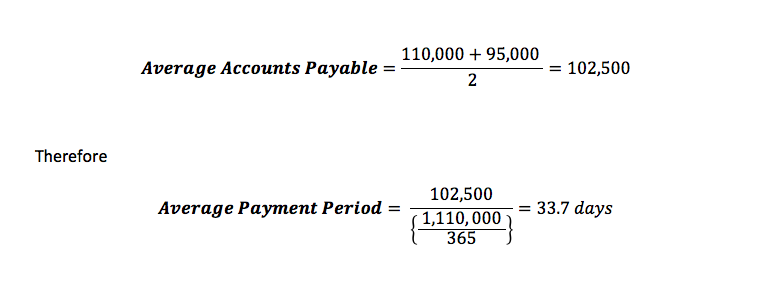 What is Average Payment Period?
What is Average Payment Period?
Definition: Average payment period (APP) also known as days payable outstanding (DPO) is a measure that helps companies and businesses to determine the average number of days taken to pay vendors for credit purchases. This solvency ratio is important for the business as it makes one prepared to pay creditors when the time comes to do so.
The business or company needs to keep the average payable days low because this can help inspire confidence among suppliers and will help you take advantage of trade discounts they might be offering. Since APP is a solvency ratio it helps the business to assess its ability to carry business in the long-term by measuring the ability of the company to meet its obligations. Also since it helps the business know when to pay vendors it can help the company in making cash flow decisions.
Average Payment Period Formula
To calculate the average payment period formula, you have to divide the company’s average accounts payable by a derivative of credit purchase and number of days in the period.

It’s important to note that you can get the figures for the variables from the financial statement of the company. Usually, the time used is a year (365 days) but some companies calculate APP quarterly or semi-annually.
Consider the example below.
Average Payment Period Example
Company XY began 2019 with accounts payable balance or $110,000 and at the end of the year, it had an accounts payable balance of $95,000. In the course of 2019, the company bought $1,110,000 of its products on credit. Its average payment period will be:

In this instance Company, XY will take 33.7 days to pay its vendors which means it is not subject to late penalties on its purchases. Paying vendors earlier means the company can take advantage of discounts on various products from the suppliers.
However, if the payment period is longer then it means that a company is compromising on some important savings by taking longer to settle. If a supplier is giving let’s say a discount of 10% for the company to pay them in 30 days then the company should evaluate if it has enough cash flow to meet the obligation in 30 days. This 10% discount could significantly add to the company’s bottom line.
Therefore it is important for companies to pay attention to the discounts that vendors might be offering. Normally most vendors have payment terms of either one month, two months or three months. This implies that the amount invoiced by the vendor has to be settled within that period anything after the invoice date attracts a late penalty.
APP is important in determining the efficiency of utilizing credit in the near term. Similarly, it helps evaluate the ability of the company to pay creditors in the long term. If the average payment period of a company is low which means that it settles credit payment s faster and on time it is likely to attract good payment terms from the existing and new vendors.
When beginning to calculate APP for businesses it is important to consider the number of days within the period. For instance, when considering a quarterly report the number of days will vary even if you are considering annual financial statements.
Average Payment Period Analysis
It is important to note that the average payment period is a vital company metric in evaluating cash flow management. The comparison of the average payment period should be done relative to the company’s needs and industry.
Most importantly this measure is important in helping the company asses its use of credit in the near-term and its ability to operate in the long run.
